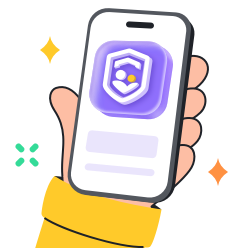The Internet is a huge source of all sorts of information and entertainment, as well as social networking. But it also makes users exposed to content that is not expected to be viewed by everyone. The NSFW meaning is important to comprehend in the world of digitalization by modern parents. NSFW warning is prevalent on social media, websites, and messaging services. So, to keep children free of inappropriate material on the internet, parents need to understand what this term implies.
By understanding the NSFW definition, parents can feel confident about their kid’s safety and instruct children on how to use the internet safely, how to set limits, and how to react when problems emerge.
What does NSFW meaning stand for?
NSFW — It is an abbreviation of a term that means Not Safe For Work. On the internet, this term has become a common slang term to place material that is unfit to be used in a personal or business environment. The definition of NSFW is precise and simple. It is anything that may bring disgrace, embarrassment, or punishment when seen in a workplace setting or in a place of public view.
The word first appeared in Internet forums and message boards. It immediately reached social media, news outlets, and messaging apps. It is known to internet users today, both young and old.
The definition of NSFW does not factor into adult entertainment solely. It also has materials that are controversial, offensive, or disturbing. e.g., an accident, a violent attack, or politically controversial content can also be marked as NSFW. The aim is to provide the users with a choice. Their surroundings and personal comfort can determine whether they want to see the material or not.
As a parent, you need to know the NSFW definition. It enables you to identify potential risks and act to ensure the protection of your children. Children might not realize what NSFW posts entail. They can be either inquisitive or know nothing about the risks. So, it requires the parents to teach themselves and the children the definition and danger of the NSFW materials.
What types of content are labeled as NSFW?
The NSFW content meaning is comprehensive. Parents should gain an understanding of the types of content that are generally marked as NSFW. This knowledge will enable them to identify and respond to potential threats.
Block explicit content and get real-time alerts instantly.
Nudity and pornography
The Content that is most likely to encounter NSFW is the one that involves nudity or sex. This contains photos, videos, and drawings intended for adult audiences. The internet is full of pornographic materials.
Graphic violence
Graphic violence in videos or imagery is also NSFW content. This could be physical injury, blood, gore, or excessive violence. The violent content is ubiquitous in the news stories, video games, films, and videos that users circulate on the Internet. Other online communities also post violent content to shock or entertain people.
Vulgar language or politically censored
Additionally, items containing profanity, hate speech, or politically sensitive content can be marked as NSFW. This encompasses both text, audio, and video. Moreover, memes, comments, and online discussions are some of the other areas where vulgar language can present itself. Lastly, politically volatile posts can contain unsound views, use slurs, or post content that provokes wrath or discord.
User-generated content
With the advent of social media and content-sharing websites, a surge of user-contributed NSFW content has emerged. These are mostly memes, derivative works, and AI images.
Other sensitive material
Sections about drugs, self-harm, suicide, or other harmful actions can also be NSFW. There are online groups that talk about or even encourage dangerous practices. This content may be shown to children through search, recommendations, or direct messages.
Where do kids encounter NSFW content online?
Children and adolescents are among the most dynamic internet users. They employ a range of communication, enjoyment, and educational media. Unfortunately, these platforms may also expose users to NSFW online content. Prevention depends upon an understanding of where and how children get exposed to this material.
Social platforms
Young users are fond of sites such as Reddit, Discord, and Telegram. It is pretty easy to come across NSFW content on such platforms.
Video platforms
Twitch and YouTube are the most popular video-sharing websites. The content they provide covers any conceivable subject. Although both websites have policies regarding explicit content, it might still present itself.
Unsafe ad links and search engines
Internet access points are available through search engines like Google and Bing. Children use them to access information, images, and videos. Explicit material can be reached through uncensored searches or dangerous advertisement links.
Unregulated device browsers
A large proportion of children own devices, including smartphones, tablets, or computers. When these devices are not in your view, children can navigate the internet at will.
Online games and virtual worlds
Several online games and virtual worlds also have chat capabilities or user-generated content. Players can share images, links, or messages. Other games have little to no moderation, and thus, NSFW content propagates. Children may encounter explicit content when playing or interacting with other users.
Messaging apps and personal chats
Chatting applications such as WhatsApp, Instagram, and Snapchat can be used privately. Children are sent NSFW images, videos, or links by both friends and strangers. Certain users open group chats where they can share explicit content. Moreover, parents often struggle to monitor what happens in private messages.
How can NSFW meaning affect your child’s development?
Children are worse off when it comes to dealing with NSFW content. The impacts can be either short-term or long-term. Learning about these dangers enables parents to take reasonable measures.
Psychological impact
Trying to watch pornographic or violent content may lead to perplexity, worry, and emotional imbalance. Children will not know the visual aspect. They are sometimes scared, ashamed, or guilty. Also, harmful actions can become normal or get desensitized through repeated viewings.
Imitation and risk taking
Children are suggestive. They can emulate the actions presented in NSFW content. This may involve sexual activities, brutalities, or substance abuse. Similarly, others may trigger behaviour like acting out before brothers, sisters, or classmates.
Addiction and compulsive usage
The reward system in the brain reacts to explicit matter. So, this can result in obsessive watching and an inability to quit. Making porn cocaine could hamper the school and relationships and everyday life.
Malware and phishing
There are also NSFW links that have malware or phishing. Clicking on these links may compromise the security of your device. Hence, hackers can access personal data, put spyware, or use the gadgets for illicit purposes. Moreover, children are less prone to realize such risks.
How to know if a link or image is NSFW?
It is not always obvious what NSFW content is. Nevertheless, typical indicators are available to help users identify such content. Prevention relies on understanding the NSFW images meaning.
NSFW label
The majority of platforms involve an NSFW label or a warning to identify explicit material. This term can be seen in search, social media, or chat groups. The label is a strong indication that the content is inappropriate for every audience.
Blurred previews
Image or video previews are blurred on some websites and applications. Users must tap to open the content. This additional measure helps prevent unintentional exposure. It also allows the user to choose whether to read the content.
Tips On content filter
Even communities like Reddit have automatic filters and warnings for NSFW content. Users can receive a message or an icon indicating that the content is sensitive. These filters are not foolproof, but they offer an extra line of defence.
Folder names or group names
Chat groups or image folders marked as NSFW usually contain explicit content. Children can easily get to the NSFW labels while browsing or joining groups. Moreover, the addition of ‘NSFW’ in a name serves as a severe warning that the content should not be viewed.
User warnings and reports
On some platforms, users can report or flag NSFW content. This explicit material can be limited with the help of warnings or reports by other users. So, parents need to teach their children to report inappropriate content.
How can parents block NSFW content?
There are several apps and methods that parents can use to restrict NSFW content and keep their children safe before they open up to the real world. The best way would be to integrate technology and education.
Parental control



FlashGet Kids can block explicit material and filter sites. Also, provide real-time alerts and reports.
- Learn and share
Communication must be free. Parents are advised to talk about the dangers of pornography graphics and invite kids to ask questions. Establishing clear expectations and rules helps children develop a clear understanding of boundaries.
- Patch and upgrade devices
Updates to devices and software are a must to stop malicious software and security breaches. Similarly, parental control tools should be regularly updated to remain effective.
- Encourage reporting
Children should understand how to report inappropriate content. Also, you should help children process their curiosity and questions after they come across such content.
Conclusion
The digital age requires parents to comprehend the meaning of the word nsfw. The internet presents numerous opportunities, but it also poses significant dangers to children. NSFW materials are rampant, and they can be catastrophic to the development of children. Hence, parents must be proactive in identifying, filtering, and discussing explicit content.
The meaning behind the word, the warning: the “nsfw meaning” cannot be underscored. So, parents should guide their children through the internet by placing restrictions, installing parental controls, and creating open communication. The best way to deal with the threat of NSFW content is to remain knowledgeable and engaged.
FAQs
Not every NSFW piece is unlawful. Nonetheless, some kinds, including child pornography or nonconsensual intimate images, are illegal in most jurisdictions. Any distribution or storage of unlawful NSFW material may be punishable by harsh sanctions.
Yes. Website blockers, add-ons, and ad-blockers are available to identify and stop access to NSFW material. Such tools utilize keyword filters, the blacklisting of URLs and image analysis.
Most parental control applications report activities and notify of attempts to access adult websites. So, checking the browsing history and alerting on flagged content keeps parents informed.

